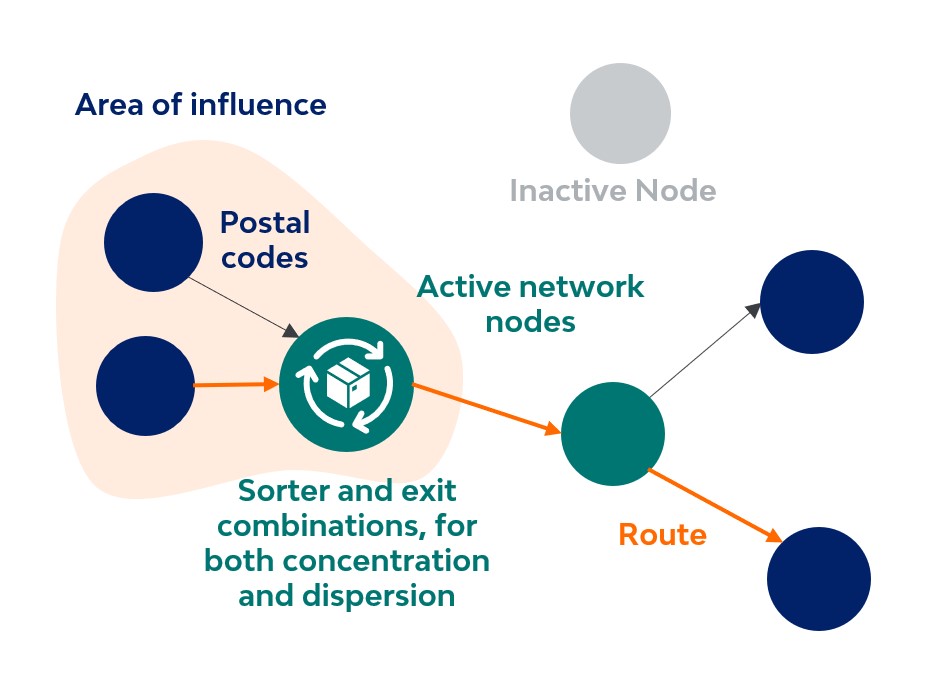The e-commerce boom was already underway when a pandemic stroke, taking growth to a whole new level. With higher demand for parcels came higher pressure on parcel delivery companies to ensure a high service level, quick delivery in under 24h and low costs to keep up with growing competition.
Our client was faced with the need to transform its Iberian distribution network to ensure sufficient capacity for growth and flexibility for future uncertainty. Doing so required the definition of optimized routes from origin to destination, made possible by a web of sorting centers connected by complex linehaul routings, to answer a key question: when and where to invest in additional automated sorting capacity?
Our approach can be divided into three main steps, whose interdependencies guarantee a holistic solution.

Firstly, multiple demand scenarios were established, ranging from pessimistic viewpoints to more optimistic ones. These were then further decomposed to account for demand volatility and seasonality during the year, leading to a total of 15 studied day profiles.
This input enabled the use of an optimization module, which leaned on stochastic variables to encapsulate the effect of demand uncertainty. The multi-period problem finds the investment roadmap that minimizes overall costs, resulting from pick-up, handling, linehaul transportation and last mile distribution.
While the optimization layer aims at finding automation needs, the last simulation layer estimates ensuing fulfilment rates. An Anylogic model supported the validation of the recommended network, by studying service level at the most granular level.
A detailed 10-year roadmap was established to plan investments both in timing and volume. This accounted for technology constraints regarding the modularity of the purchasing and upgrading of the equipment, processing speed, and divisional possibilities.
The client is now empowered by a clear definition of priorities, with full-time-bound visibility over its capacity limitations.
Economies of scale, resulting from an efficient supply chain prepared for the expected market growth, lead to foreseeable reductions of around 30% in daily unit costs.
By: Paulo Sousa